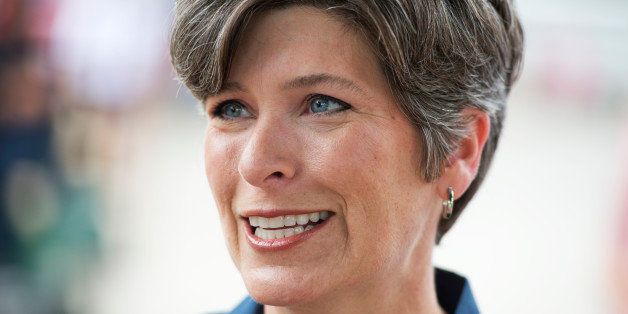
This story was originally published by The Center for Public Integrity, which is a nonprofit, nonpartisan investigative news organization in Washington, D.C.
Editor’s note: The Center for Public Integrity is tracking political advertising in races for the U.S. Senate and state-level offices. Use these two, interactive features — with new data every Thursday — to see who is calling the shots and where the money is being spent.
Three political ads every five minutes.
That’s what television viewers in North Carolina and Iowa endured last week — and those are just the ads targeting the states’ hyper-competitive U.S. Senate races.
In all, U.S. Senate campaigns and various non-candidate political groups aired about 6,200 ads each in North Carolina and Iowa from Tuesday, Sept. 23, through Monday, Sept. 30, according to a Center for Public Integrity analysis of preliminary estimates from Kantar Media/CMAG, an advertising tracking service.
Across the country, U.S. Senate elections generated about 49,000 TV ads during the last week of September, the analysis concludes.
The GOP must pick up at least six seats this year to win a U.S. Senate majority. Such a victory would all but ensure Republican control of Congress, as the GOP is widely expected to retain control of the U.S. House.
Politics investigations in your inbox: Sign up for the Center for Public Integrity's Watchdog email.
Related: Who's buying the Senate?
More stories in the Buying the Senate 2014 investigation from the Center for Public Integrity
Related: Big money is also being spent in elections for state-level positions.
In the Tar Heel State, embattled incumbent Sen. Kay Hagan, a Democrat, is vying for re-election against Republican Thom Tillis, who currently serves as the state’s House speaker. North Carolina has long been a target for Republicans eager to oust Senate Democrats from power.
In Iowa, meanwhile, a contentious open-seat race has more recently emerged in the wake of incumbent Democratic Sen. Tom Harkin’s plans to retire at the end of the term.
There, Democratic Rep. Bruce Braley is running against Republican state Sen. Joni Ernst.
In both states, Republicans and their allies held a slight edge over their liberal rivals in terms of ads aired during the final week of September.
In Iowa, Ernst and groups supporting her Senate bid aired about 3,500 ads, or about 56 percent of the overall total.
In addition to Ernst — who aired about 700 ads, or one ad every 15 minutes — her candidacy was boosted by groups including American Crossroads, the super PAC co-founded by GOP strategist Karl Rove, the National Republican Senatorial Committee and the U.S. Chamber of Commerce.
Meanwhile, in North Carolina, Tillis and groups aligned with his campaign aired about 3,300 ads, or about 53 percent of the total — although the Tillis campaign itself was only responsible for airing about 600 ads, according to Kantar Media/CMAG.
A range of conservative groups — including the NRSC, the National Rifle Association and a super PAC called the Freedom Partners Action Fund, which has ties to the conservative billionaires David and Charles Koch — accounted for the rest.
Another notable conservative nonprofit active in North Carolina’s U.S. Senate race: Carolina Rising, which was formed in April by Dallas Woodhouse, the former North Carolina state director of Koch-supported nonprofit Americans for Prosperity.
Carolina Rising has spent more than $3 million on pro-Tillis issue ads, according to filingsin September submitted to the Federal Election Commission. It also aired a number of ads praising Tillis in August, but because the spots touted Tillis without overtly directing viewers to vote for or against him, the expenditures were not required to be reported to the FEC.
The Democratic candidates in both Iowa and North Carolina have also been beneficiaries of air cover from other non-candidate groups, including the Democratic Senatorial Campaign Committee and a super PAC known as the Senate Majority PAC, which is run by allies of Senate Majority Leader Harry Reid, D-Nev.
Since January 2013, more than 625,000 TV ads have aired in U.S. Senate races across the country, according to Kantar Media/CMAG.
More than 70 percent of them — about 440,000 — have aired in the nine most competitive Senate contests between Democrats and Republicans.
Additionally, nearly 12,000 TV ads have aired in Kansas’ U.S. Senate race —an unexpectedly competitive contest where incumbent GOP Sen. Pat Roberts’ main challenger is wealthy businessman Greg Orman, who is running as an independent and has not committed to caucusing with either party.
Through late September, the campaigns of both Orman and Roberts had sponsored about 4,600 ads — at an estimated cost of about $1.7 million, according to Kantar Media/CMAG.
Recently, the Koch-connected Freedom Partners Action Fund super PAC has also boosted Roberts’ re-election bid, airing about 170 ads during the final week of September, according to Kantar Media/CMAG.
Freedom Partners Action Fund has spent $260,000 in Kansas’ U.S. Senate race alone, according to reports filed with the FEC.
Copyright 2014 The Center for Public Integrity
